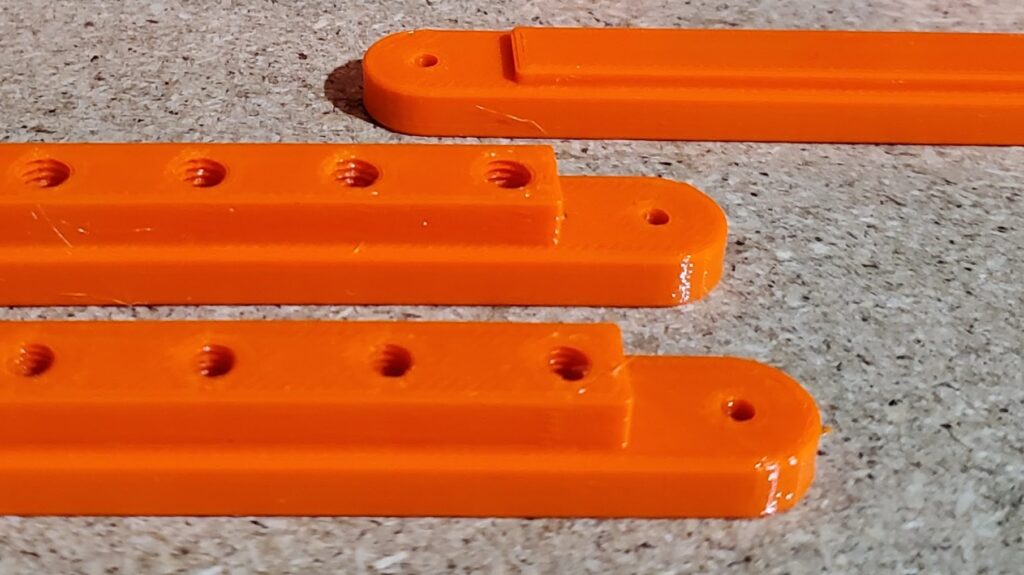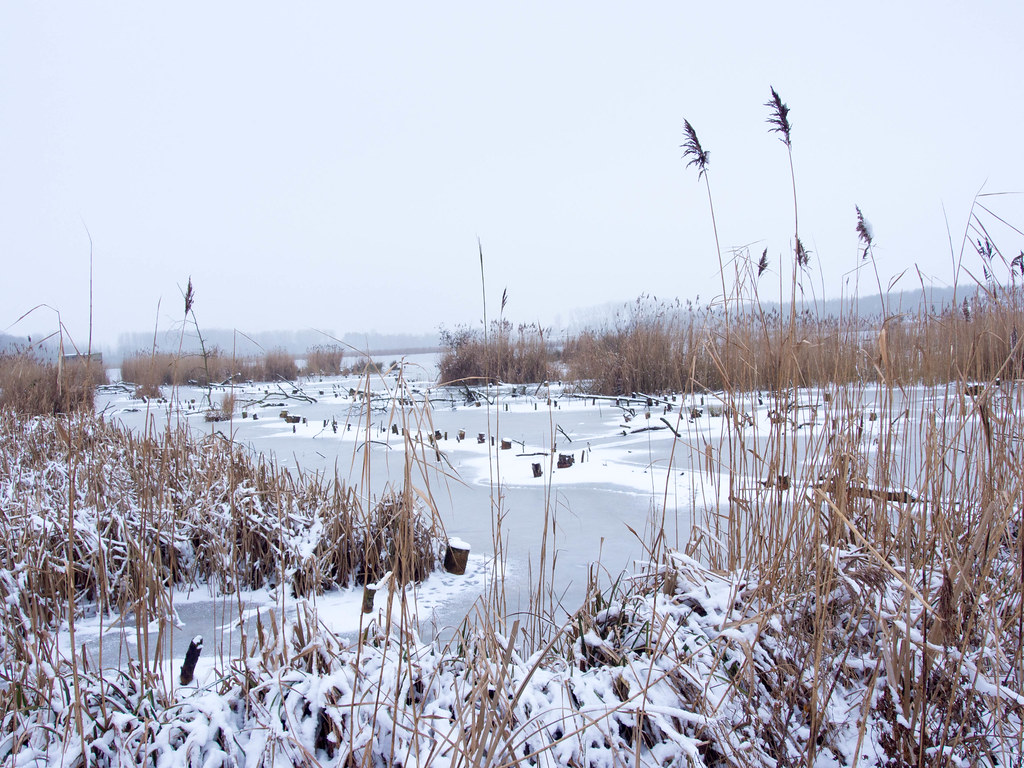
Winter driving presents a unique set of challenges that can quickly turn a routine commute into a frustrating or even dangerous ordeal. From freezing temperatures to icy roads, the season puts immense strain on every component of your vehicle, demanding a different, more vigilant approach to car care. While some winter woes might seem unavoidable, many common problems actually stem from preventable mistakes made by drivers in a rush or out of habit.
We often find ourselves in a hurry during the cold months, tempted to cut corners on vehicle preparation, only to discover later that these seemingly minor oversights can lead to significant damage or costly repairs. To help navigate the season safely and efficiently, we consulted experts like Kristine D’Arbelles, a senior director for the Canadian Automobile Association, and David Bennett, a repair manager for AAA. They shared invaluable insights with Popular Mechanics on the most common winter car-care mistakes and, crucially, how to prevent them from turning into roadside nightmares.
This in-depth guide will unpack critical errors many drivers make when temperatures plummet, providing practical, authoritative advice to protect your investment and ensure you stay on the road without unnecessary stress. Understanding these pitfalls and adopting smarter habits is the key to preventing breakdowns, enhancing safety, and maintaining your vehicle’s longevity through the harshest winter conditions.

1. **Using Hot Water on Frozen Car Parts**It’s a scenario many drivers face: waking up to a car encased in ice, with a frozen windshield or stubbornly stuck door locks. The immediate, almost instinctive, urge is often to grab the nearest kettle or bucket of warm water, thinking a quick splash will solve the problem. However, this seemingly quick fix is one of the most damaging mistakes you can make, and it’s a warning echoed by experts like David Bennett, who cautions, “You don’t want to put anything warm on something that is already frozen.”
The fundamental issue lies in the rapid temperature change. When glass or metal is frozen, it becomes brittle. Introducing a sudden, drastic temperature shift, such as pouring hot water on a frigid windshield, can make it even more brittle, potentially causing it to crack or shatter. That small rock chip you barely noticed last week can become the starting point for a spiderweb crack across your entire windshield when subjected to thermal shock. This can compromise your visibility, lead to expensive repairs, and even affect your car’s structural integrity.
Instead of resorting to hot water for your windshield, patience and proper tools are your allies. Bennett suggests starting your car and letting the heater and defroster do the hard work. While the car warms up, blast the heat on full and use a sturdy ice scraper to gently clear the ice. This gradual warming process allows the ice to loosen without shocking the glass, preventing damage and ensuring a clear view before you hit the road.
The same principle applies to frozen door locks and handles. Dumping hot water on them can damage the delicate mechanisms inside, leading to malfunctions or breakage. Kristine D’Arbelles advises using commercially available de-icer sprays, which are designed to thaw locks safely without causing damage. It’s a smart precaution to store this spray somewhere easily accessible, like your bag or coat pocket, rather than inside the car where you can’t reach it when you need it most.
David Bennett also supports the use of commercial de-icers for frozen locks and handles. If you don’t have one handy, a hairdryer can be an effective alternative. Gently direct the hot air at the frozen area to melt the ice gradually. However, a crucial caveat he offers is not to get too close, as applying excessive heat directly to the car’s paintwork for too long can harm its finish. Slow and steady wins the race when it comes to defrosting your vehicle without causing further harm.
Read more about: Iceland’s Northern Lights: Your Ultimate Guide to an Unforgettable Aurora Borealis Adventure, Especially Now!

2. **Driving With Ice and Snow on the Exterior**While it might seem like an obvious point, one of the most common and dangerous mistakes drivers make in winter is hitting the road with ice and snow still clinging to their car’s exterior. Many drivers clear only a small patch of their windshield, creating a “peephole” effect that severely limits their field of vision. This isn’t just poor practice; as D’Arbelles points out, “being an igloo on wheels is even against the law” in many places.
Driving without fully clearing all exterior windows and mirrors is an accident waiting to happen. Your ability to perceive other vehicles, pedestrians, and road hazards is drastically reduced, making even simple maneuvers like changing lanes or turning incredibly risky. Beyond immediate visibility, failing to clear snow from your car’s roof can also create hazards for other drivers. As you accelerate or brake, sheets of snow and ice can detach, flying off your vehicle and potentially obstructing the view of those behind you or causing damage to their cars.
The critical importance of thorough clearing cannot be overstated. Before you even put the car in drive, take the time to scrape all ice from your windshield, side windows, and rear window. Ensure your side mirrors are completely free of snow and ice, and don’t forget to brush off any snow accumulated on your headlights and taillights to maximize their effectiveness. Even small amounts of snow can significantly dim your lights, making you less visible to others and reducing your own sightlines.
Visibility extends beyond just the exterior. D’Arbelles reminds us not to forget about the inside of the car, especially foggy windows. Many drivers mistakenly think they need to crank up the heat to clear interior condensation, but she offers a practical tip: “Your AC is also a dehumidifier,” she says, so “use it to clear foggy windows for better visibility.” This simple trick can quickly improve your internal visibility, ensuring a clear view from all angles before you embark on your journey.
Read more about: Remembering a Legend: Burt Reynolds and His 12 Most Iconic Roles That Defined an Era

3. **Using Regular Windshield Washer Fluid**When your windshield washer fluid reservoir runs low, especially during winter, it’s tempting to refill it with whatever liquid is readily available, often just regular tap water. This seemingly innocuous choice is a common mistake that can lead to significant problems, as David Bennett of AAA explicitly warns, “Don’t try to rig something up.” He emphasizes the importance of using the correct parts and fluids for your vehicle, especially when facing cold weather.
The danger with using regular water in your windshield washer system in winter is simple yet critical: it freezes. Water expands when it freezes, and this expansion can damage the washer fluid lines, the pump, and even the reservoir itself. A frozen system will not only be ineffective when you desperately need to clear road salt and slush from your windshield, but it can also cause costly repairs to the entire assembly. Imagine being on a snowy highway with your visibility suddenly obscured, only to find your washer fluid system is completely inoperable because you used the wrong fluid.
The solution is straightforward and essential for winter readiness: always use a winter-specific windshield washer fluid. These specialized fluids are formulated with a higher concentration of antifreeze agents, such as methyl alcohol, which significantly lowers their freezing point. This ensures that the fluid remains liquid and functional even in sub-zero temperatures, allowing you to maintain clear visibility no matter how harsh the conditions get. Bennett strongly advises, “You want to put the proper fluid in there,” underscoring the necessity of this preventative measure.
Beyond just preventing freezing, winter blend washer fluids are also often designed to be more effective at cutting through the grime, salt, and slush that accumulate on your windshield during cold weather. They offer superior cleaning power compared to regular water or even standard all-season fluids, ensuring that your view of the road remains unimpeded. Keeping an extra bottle of winter-grade washer fluid in your car during the colder months is a small step that can make a huge difference in your safety and convenience.
Read more about: Unlock Major Savings: 15 Essential Car Maintenance Hacks That Can Save You Over $1000 Annually (Even on Brand New Models)

4. **Warming Your Car By Idling for Extended Periods**For many drivers, the ritual of starting the car and letting it idle for a considerable amount of time before setting off in cold weather is deeply ingrained. The belief is that this prolonged idling helps the engine “warm up” properly, making it ready for the drive. However, modern engines, unlike their older counterparts, actually benefit very little from extended idling, and engaging in this practice is largely a significant mistake, according to experts.
David Bennett unequivocally states that warming a car by idling is a “waste of money, just a waste of gas.” He explains that a car will always warm more quickly and efficiently while driving than by simply idling. Modern vehicles are designed to reach optimal operating temperature under a light load, meaning gentle driving after about 30 seconds to a minute of initial idling is far more effective than letting the engine run stationary for five, ten, or even fifteen minutes. Prolonged idling not only burns unnecessary fuel but also contributes to increased emissions, which is detrimental to the environment.
Furthermore, extended idling can have negative consequences for your engine’s internal health. It can lead to the dilution of engine oil with unburned fuel, which in turn increases wear on engine components over time. This happens because the engine is not operating at its most efficient temperature, causing incomplete combustion and the accumulation of fuel residues. Instead of protecting your engine, you could inadvertently be shortening its lifespan and increasing its maintenance needs.
Bennett highlights that the primary focus before driving in winter should be visibility, not just engine warmth. He advises drivers to “Take the time to defrost the windows, making sure you are scraping the ice. Wait until you can see out the entire window and not just that tiny, little spot.” This means prioritizing the task of ensuring clear sightlines through all windows, using the car’s defroster and a scraper, rather than simply letting the engine run while you wait for magic to happen. Once visibility is assured, a gentle drive is the most effective way to bring your vehicle up to full operating temperature.
Read more about: Unmasking the Motoring Misconceptions: 14 Common Car Myths That Could Cost You Dearly and Harm Your Engine

5. **Operating Windows While Still Icy**After a night of freezing temperatures, it’s common to find car windows covered in a stubborn layer of ice. In the rush to leave, many drivers make the critical mistake of attempting to lower or raise their windows while they are still encrusted. This action can lead to significant and often costly damage to your car’s window mechanisms, a warning strongly emphasized by vehicle care experts.
The internal components responsible for operating your car’s windows – the motor, regulators, and seals – are extremely cold when the temperatures drop. When you add the friction and rigidity of a layer of ice to this already stressed system, the mechanism can become overloaded. The ice acts as a formidable obstruction, forcing the motor and gears to work against a resistance they are not designed to handle. This additional strain can easily cause components to break or strip, leading to a malfunctioning window that can no longer be lowered or raised.
It’s not just the moving parts that are at risk. The rubber seals around your windows can also become brittle and frozen to the glass. Attempting to force the window down while it’s stuck can tear or damage these seals, compromising their ability to keep out moisture and noise in the future. Repairing a window mechanism or replacing damaged seals can be a surprisingly expensive endeavor, often requiring professional help to dismantle the door panel and replace the affected parts.
As a cautionary tale, the context mentions that this exact scenario “recently happened to one of the Pop Mech editors,” serving as a tangible reminder of the real-world consequences of this overlooked mistake. The frustration of a stuck window in winter is minor compared to the headache and expense of a broken one. Therefore, always ensure your windows are completely free of ice before attempting to operate them, allowing the car’s defroster or a gentle scraping to do its work first.
Read more about: The Gritty Truth: 14 ‘Dirty’ Jobs That Pay Six Figures and Might Just Change Your Life!

6. **Neglecting to Defrost Locks and Handles Safely**Frozen door locks and handles are a familiar winter frustration, often preventing immediate access to your vehicle. While the impulse to quickly thaw them is understandable, the method chosen can be the difference between a minor inconvenience and significant damage. As previously mentioned for windshields, using hot water on frozen locks and handles is a critical mistake that can inflict lasting harm on the internal mechanisms.
The sudden extreme change in temperature from hot water to a frozen metal lock can cause the delicate components within to expand and contract unevenly, leading to warping or breakage. Modern car door mechanisms are complex, often containing plastic parts, sensors, and electronic components that are particularly vulnerable to such thermal shock. The water itself, if it refreezes, can also exacerbate the problem by creating more ice within the locking assembly, compounding the issue.
Kristine D’Arbelles recommends a safer and more effective approach: using commercially available de-icer sprays. These products are specifically formulated to melt ice quickly and safely without damaging your car’s paintwork or internal components. However, there’s a crucial practical tip: “Just make sure you store that spray somewhere that’s not the inside of your car; otherwise you’re going to rush to get those frozen locks and handles thawed, which can lead you back into the cycle of damage.” Keeping the de-icer accessible means you won’t be locked out of your own solution.
David Bennett also advises against water on frozen locks and handles, suggesting commercial de-icer as the preferred method. If you don’t have a de-icer handy, he offers an alternative that requires a bit more caution: using a hair dryer. The key is to apply gradual, gentle heat to the frozen area to slowly melt the ice. He issues a clear warning: “Remember not to get too close though, because getting the paint on your car very hot can harm it.” Patience and controlled heat are essential to protect both the locking mechanism and your car’s exterior finish.

7. **Lifting Wipers Before a Storm or Not Replacing with Winter Wipers**Many drivers instinctively lift their windshield wipers off the glass before an anticipated snowstorm, believing it will prevent them from freezing to the windshield and make subsequent clearing easier. While the intention is good, Kristine D’Arbelles warns that this common practice is actually “not a good idea.” It’s a seemingly helpful maneuver that can, over time, lead to reduced wiper performance and even damage.
Regularly lifting your wipers can strain the wiper arm’s spring mechanism. Over time, “doing so is likely to reduce the pressure of the blades against the windshield,” D’Arbelles explains. This reduced pressure means the wiper blades won’t make full contact with the glass, significantly impairing their ability to clear away snow, ice, rain, and slush effectively. The result is diminished visibility, especially in heavy precipitation, which compromises safety.
Beyond performance issues, there’s a more immediate risk. If a lifted wiper arm unexpectedly loses tension and snaps back towards the windshield, it can strike the glass with considerable force. This impact, particularly on a cold winter day when glass is more brittle, could easily crack or shatter the windshield. A sudden crack can render your vehicle unsafe to drive and lead to an expensive repair, turning a simple preventative measure into a costly problem.
Instead of lifting wipers, a more effective strategy is to ensure your wiper blades themselves are up to the task. Standard wipers can become brittle and less effective in freezing temperatures, leading to streaks and poor visibility. The context suggests that with wipers typically having a life of only half a year, some drivers proactively switch to winter-specific blades. These specialized blades are designed with more robust frames and rubber compounds that resist cracking and ice buildup, providing superior clearing power in harsh conditions.
Even without a full replacement, consistent maintenance is key. Check your wiper blades before winter sets in; if they’re torn, cracked, or leaving streaks, replace them. Additionally, using a windshield washer fluid rated for freezing temperatures, as discussed earlier, will prevent ice buildup on the blades and ensure they glide smoothly across the glass. Keeping your wipers clean and functional is paramount for maintaining clear visibility throughout the challenging winter months.

8. **Ignoring Your Tire Pressure**As temperatures plummet, one often-overlooked yet critical aspect of winter car care is maintaining proper tire pressure. It’s a subtle change, but cold weather significantly impacts the air within your tires, causing the pressure to drop. David Bennett of AAA highlights this, stating that judging your tire pressure can get tricky during cold weather. This seemingly minor oversight can lead to compromised handling and increased wear, directly affecting your safety on slick winter roads.
Underinflated tires are a significant hazard in winter conditions. When your tire pressure drops, the tire’s contact patch with the road changes, reducing vital traction needed to grip icy or snowy surfaces. This reduction makes your vehicle more susceptible to skidding, particularly during braking or turning maneuvers. Beyond the immediate safety risks, underinflation also causes tires to wear unevenly and can significantly decrease your vehicle’s fuel efficiency, costing you more at the pump.
To accurately assess and correct your tire pressure, Bennett advises following the specific requirements listed on the inside of the driver’s side door, which are tailored to your car’s needs. He provides a crucial tip for accurate readings: “filling tires when the car is relatively cold—not after you’ve driven for an hour,” as driving generates heat that falsely inflates pressure readings. Cold air contracts, causing pressure to reduce by approximately one PSI for every 10-degree Fahrenheit drop.
Regular monitoring is key. Checking your tire pressure at least once a month, or more frequently during severe cold snaps, is an absolute must. Investing in a reliable tire pressure gauge and keeping it accessible, as suggested by Consumer Reports, can head off problems before they become critical, ensuring your tires are always operating at optimal and safest levels.
Read more about: Mechanics’ Top Frustrations: 14 Bad Car Habits You Need to Stop Now to Save Money and Your Vehicle’s Life

9. **Keeping Your Fuel Tank Low**During the winter months, many drivers make the mistake of habitually letting their fuel tank run low, often waiting until the last possible moment to refuel. While common in warmer weather, it becomes a significant hazard when temperatures plummet. Kristine D’Arbelles, a senior director for the Canadian Automobile Association, emphatically states that “water in your tank is the enemy” in cold conditions. This innocuous habit can lead to a serious and costly problem: frozen fuel lines, leaving you stranded.
The primary danger lies in condensation. A fuel tank kept near empty leaves ample space for moist air to accumulate above the gasoline. As the temperature drops, this moisture can condense and freeze into ice crystals within the tank or, more critically, within the fuel lines themselves. Once the fuel line is blocked by ice, fuel cannot reach the engine, effectively rendering your vehicle inoperable. This isn’t just an inconvenience; it can be a dangerous situation if you’re stuck on a deserted road in freezing conditions.
The solution is remarkably simple but often overlooked: keep your gas tank at least half full. D’Arbelles stresses this preventative measure, explaining that “keeping your tank at least half full reduces the buildup of condensation.” With less air space in the tank, there’s less opportunity for moisture to accumulate and freeze. This small act of vigilance ensures a continuous flow of fuel to your engine, preventing the very real threat of your car sputtering to a halt due to an icy obstruction. Moreover, a fuller tank provides a crucial safety buffer, allowing you to run your engine for warmth longer if unexpectedly stranded.
Read more about: 15 Classic Cars You Might Want To Skip: An Expert Guide for Discerning Collectors

10. **Leaving Your Paint (And Undercarriage) Dirty**In the depths of winter, with icy roads and biting winds, washing your car often seems like a low priority. However, neglecting regular car washes during colder months is a significant mistake that can lead to irreversible damage. Road salt, sand, and various chemicals are liberally applied to keep roads safe, but these substances are highly corrosive and pose a direct threat to your car’s longevity and appearance.
David Bennett of AAA emphasizes proactive protection. He suggests “getting your car washed and waxed before the winter season.” This initial wax layer acts as a barrier, shielding paintwork from rust-inducing salt and corrosive road chemicals. This preemptive step significantly reduces damage, preserving the finish and preventing premature rust. Furthermore, the undercarriage of your car is particularly vulnerable. As you drive through slush, a corrosive mixture of salt and moisture clings to vital components.
Bennett strongly advises, “any time you know you’ve been driving in slush and have salt under there, get that washed off your vehicle as soon as possible.” This targeted cleaning is crucial for preventing rust from eating away at brake lines, exhaust systems, and structural elements, which can compromise both safety and performance. Regular undercarriage rinsing is a small investment that pays dividends in extending the life and maintaining the structural integrity of your vehicle, saving you from much more expensive rust-related repairs.

11. **Forgetting About Fluid Levels**Beyond just windshield washer fluid, the various critical fluids circulating throughout your car require specific attention as temperatures plummet. Many drivers overlook this broader spectrum of fluid maintenance, a mistake that can lead to sluggish performance, decreased efficiency, and even severe engine damage. Your engine oil, transmission fluid, brake fluid, and radiator coolant each have vital roles, and their effectiveness can be severely compromised by the cold if not properly managed.
Engine oil, for instance, thickens considerably in freezing temperatures, making it harder to circulate efficiently and depriving components of essential lubrication during cold starts. The owner’s manual will guide you on the correct oil viscosity; switching to a winter-grade oil ensures proper lubrication and reduces wear. Similarly, transmission and brake fluids can become less efficient if old or at improper levels, impacting shifting and braking responsiveness. Regular checks and, if necessary, replacing older fluids, maintain smooth operation and responsive control, especially on slippery roads.
Perhaps most critical is your radiator coolant, or antifreeze. This fluid is essential for preventing your engine from freezing in winter. An incorrect antifreeze-to-water ratio, or low levels, can lead to the coolant freezing, expanding, and potentially cracking your engine block—an extremely costly failure. Regular inspection of coolant levels and ensuring the proper 50/50 mix of antifreeze and water is a non-negotiable step for winter vehicle preparedness.
Read more about: Apple’s Wildcard: Unveiling 12 Unexpected Innovations That Are Reshaping Your Digital Life

12. **Ignoring Your Battery’s Well-Being**The silent killer of many winter commutes is often a neglected car battery. Few components are as susceptible to the ravages of cold weather, yet many drivers ignore its well-being until it’s too late. As temperatures drop, a battery’s capacity to deliver power diminishes significantly, while simultaneously, the engine requires more energy to start. This dual challenge often pushes older or weaker batteries over the edge, leading to frustrating no-start situations on frigid mornings.
At 32°F, a battery can lose about 20% of its strength, climbing to 50% at 0°F. This drastically reduced capacity means your battery works harder with less power. If your battery is nearing its typical lifespan—generally three to four years—or shows sluggish starts, winter will expose its weaknesses. Waiting for the first deep freeze to test its limits is a gamble most drivers ultimately lose.
Proactive battery care is paramount. Before winter truly sets in, have your battery tested by a professional to assess its health and cold-cranking ability. If weak, replacing it beforehand is a wise investment. Additionally, keep terminals clean and corrosion-free for optimal electrical flow. For extremely cold climates, consider parking in a garage or using a battery heater to maintain optimal temperature, ensuring peak performance when you need it most.

13. **Stuck Emergency Brake**Among the lesser-known, yet surprisingly common, winter car care mistakes is the habitual use of the emergency or parking brake in freezing conditions. While engaging it is standard practice in warmer months, doing so when temperatures dip below freezing can lead to a sticky situation: the brake mechanism can literally freeze in place, preventing your car from moving and potentially causing damage if forced.
The culprit is moisture. Even small amounts of water or condensation can accumulate within the emergency brake cable or caliper mechanism. When temperatures drop, this moisture freezes, effectively locking the brake in position. Attempting to disengage a frozen emergency brake by force can strain or snap the cable, damage pads, or bend components, leading to costly repairs.
Instead of relying on the emergency brake, especially when parking outdoors in freezing weather, drivers of manual transmission cars should simply leave their vehicle in gear. For automatics, relying solely on the “Park” setting is generally sufficient. If you find yourself with a frozen emergency brake, patience is key. Avoid forceful attempts; instead, gently warm the area with a hairdryer or wait for temperatures to rise. Regular lubrication of brake components can also help prevent this frustrating winter malfunction.
Read more about: Unraveling the Mystery: What Became of Jim Rockford’s Iconic Pontiac Firebird and the Cars of the Classic TV Series?

14. **Ignoring Dashboard Warning Lights**In the hustle and bustle of winter, it’s all too easy to dismiss a dashboard warning light as a minor annoyance or a temporary glitch. However, ignoring these illuminated signals, particularly during cold weather, is a critical mistake that can escalate minor issues into expensive repairs or even dangerous breakdowns. Cold temperatures exacerbate existing problems, making warning lights even more urgent indicators of underlying issues that demand immediate attention.
A check engine light, for example, might indicate a wide range of problems, from a loose gas cap to a more serious engine malfunction. In cold weather, minor issues like sensor failures or ignition system weaknesses can become more pronounced, impacting fuel efficiency or leading to misfires. Similarly, low coolant warnings, brake system alerts, or battery indicators, if ignored, can rapidly lead to overheating, complete brake failure, or a dead battery, leaving you stranded in unforgiving conditions.
The authoritative stance of automotive experts is clear: “Don’t dismiss it,” as the context advises regarding warning lights. These signals are your car’s way of communicating vital information about its health. Taking them seriously and having your car inspected by a professional as soon as possible is a necessity for safe winter driving. Early intervention prevents a small, manageable issue from becoming a major, expensive repair, especially when roadside assistance might be delayed.
**Conclusion: Drive Smart, Stay Safe This Winter**
Read more about: Mechanics’ Top Frustrations: 14 Bad Car Habits You Need to Stop Now to Save Money and Your Vehicle’s Life
As we’ve explored the most common pitfalls and preventative measures, it’s clear that winter car care is less about heroics and more about consistent, informed vigilance. The season’s unique demands on your vehicle can be daunting, but with the right knowledge and habits, you can conquer cold weather with confidence. From maintaining optimal tire pressure to protecting your undercarriage from corrosive salts, each step you take not only safeguards your investment but, more importantly, enhances your safety and the safety of those around you. Remember, a little preparation goes a long way in preventing frustrating breakdowns, avoiding costly repairs, and ensuring you can navigate winter roads smoothly and securely. Stay informed, stay prepared, and enjoy the journey, no matter how chilly it gets!



